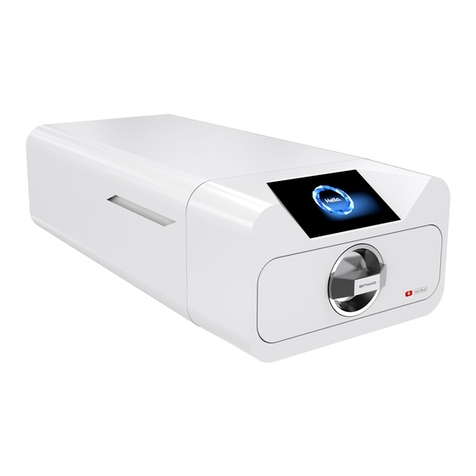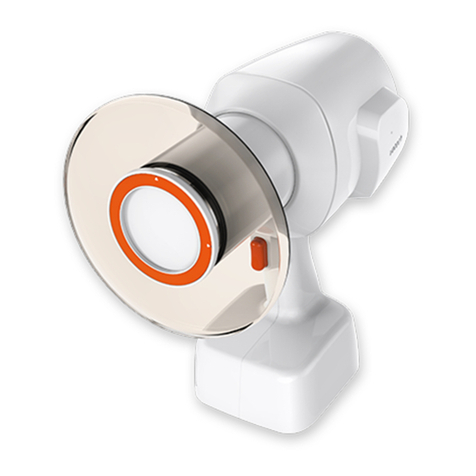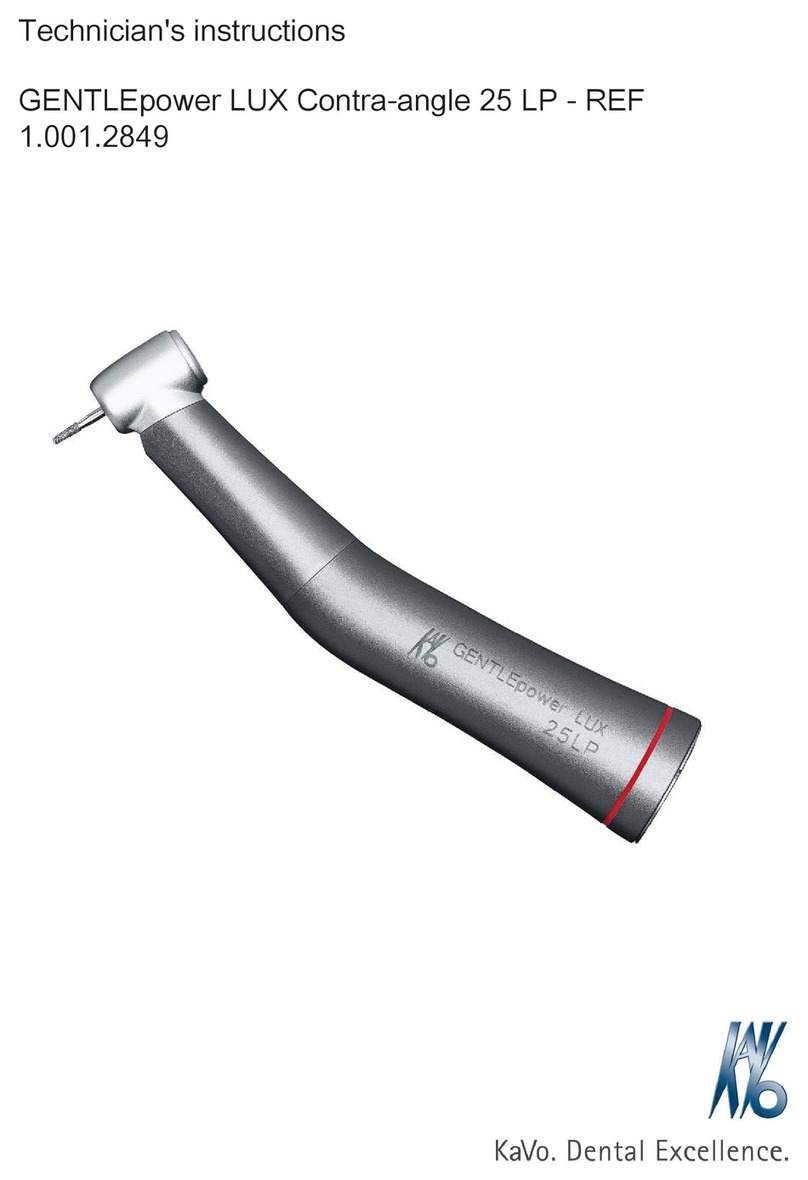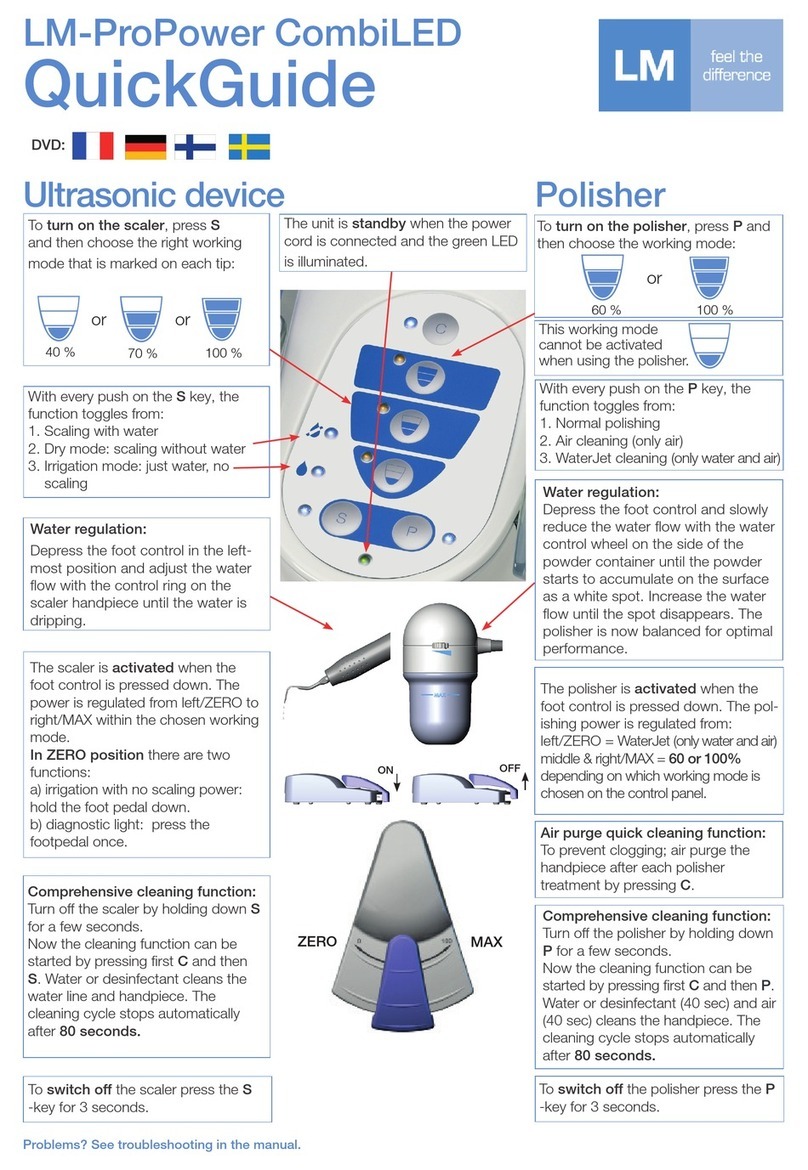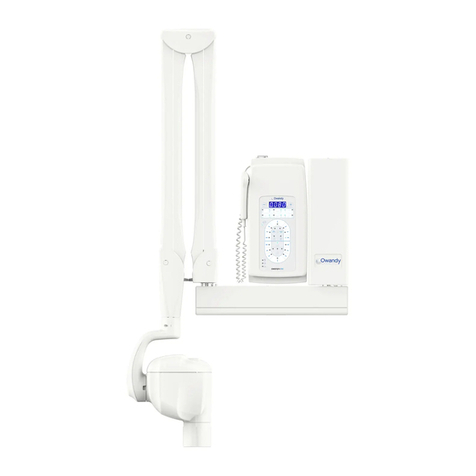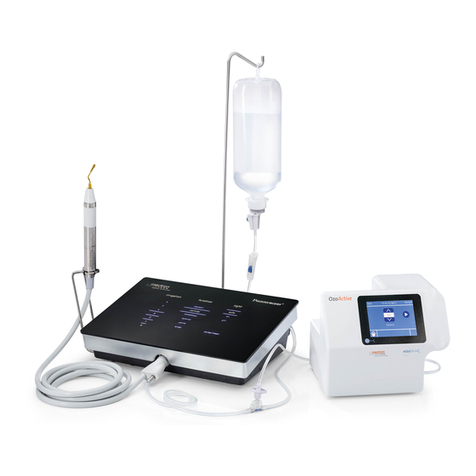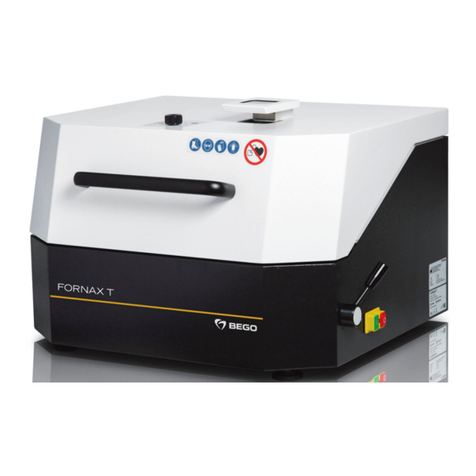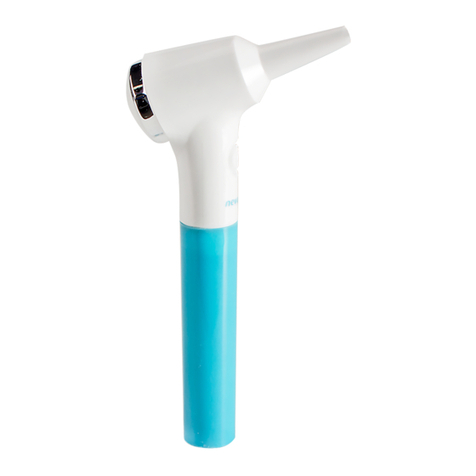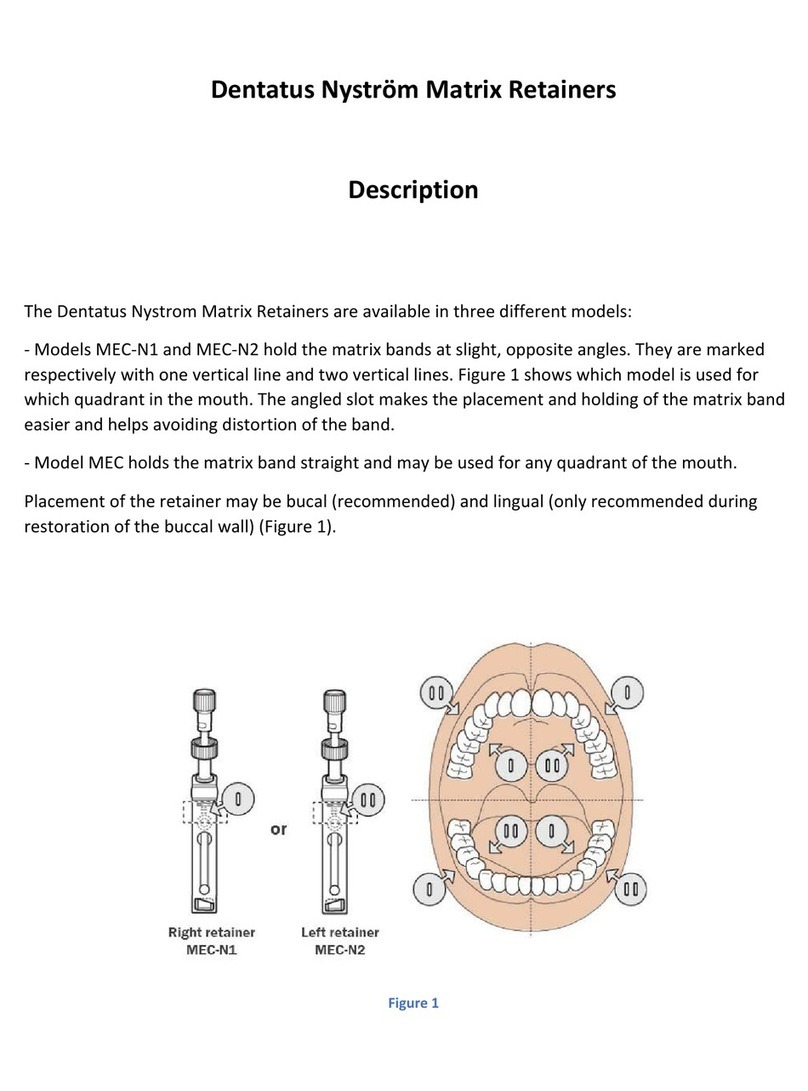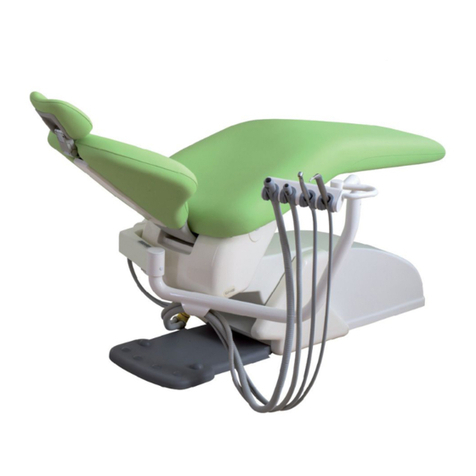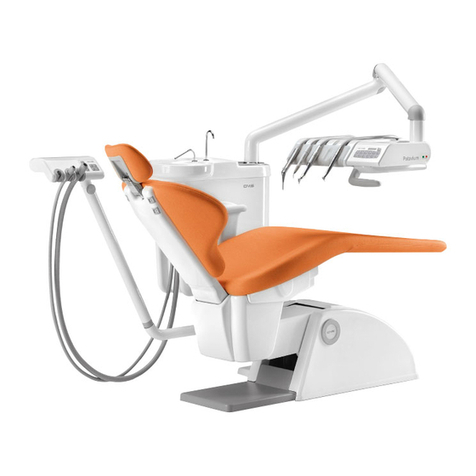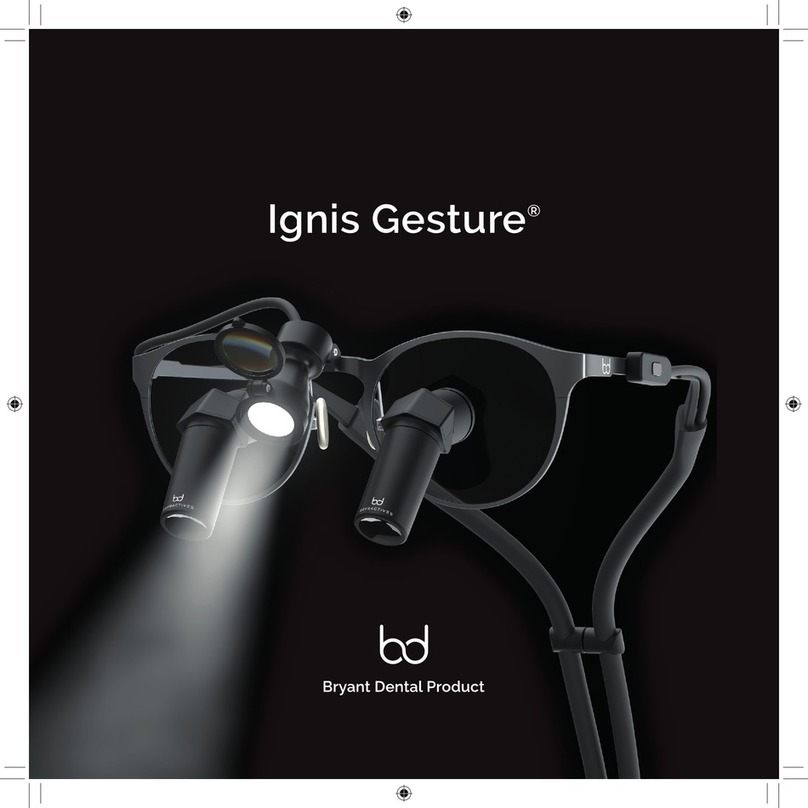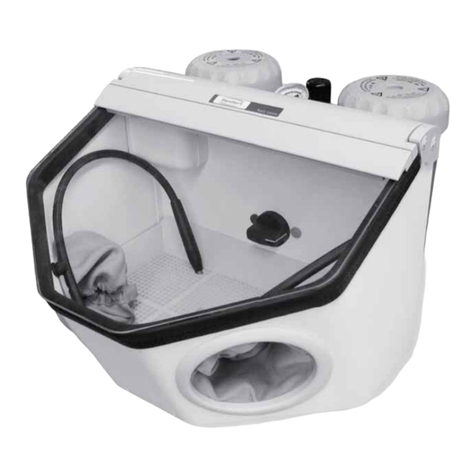Germiphene E2O User manual

Why should I test my water when I am performing regular
cleaning/maintenance?
Testing is essential in assuring your waterline treatment is
doing its job. There are many factors that affect the efficacy of a
waterline cleaning product, including the water source itself or
even human error. Complete dental unit waterline care requires
not only waterline maintenance, but also shock treatments
and monitoring. Germiphene has two waterline testing kits,
E|LineTM and E|OneTM. Contact your Germiphene representative
to find the best option for your office water.
How often should I monitor my dental unit waterlines?
There are no specific Canadian guidelines on the frequency
of dental unit waterline testing. Always check manufacturer’s
instructions first. Germiphene waterline testing kits, E|LineTM
and E|OneTM, recommend quarterly testing from at least one
line/source. Do not always test the same line/source. All lines/
sources should be tested at least once a year. In addition, the
cuspidor cupfill should be tested quarterly. During the warmest
quarter of the year, test monthly instead of quarterly. Ask your
Germiphene representative for scheduling tips. Waterline
Germiphene Waterline Monitoring Kits
E|LineTM Water Quality Check Kit
••Monitor water in house
using test vials and a dry
block incubator
••Results in 24 hours
••Easy, colour coded results
••2 Vials per test: (1) Total
Bacteria + Fungi AND (2) E. coli + faecal coliform
E|OneTM Water Quality Indicator
••Fast results
••Test E|OneTM vials in house
using:
(1) a 37°C dry block incubator –
30 minute results OR
(2) at room temperature –
1 hour results
••One test vial for bacteria,
biofilm and fungi
••Easy, colour coded results
Dental Waterline Maintenance
& Shock Treatment
First Time User Guide
For use in independent
dental water bottle systems.
Professional use only.
Use E2OTM in conjunction
with a waterline test kit such
as E|LineTM or E|OneTM.
Complete dental unit
waterline care requires:
shock treatments,
maintenance, and
monitoring.
E2OTM can
be used as
both a daily
water maintenance
treatment, as well as a
shock treatment when
mixed at a higher
concentration.
E2OTM Q&A
How safe is E2OTM if ingested?
The proprietary ingredient in E2OTM is HUWA-SAN®
Peroxide Technology, which is certified by NSF International
as a drinking water additive.
Hydrogen peroxide sold at your local pharmacy, and used
as a mouth rinse, contains 3% hydrogen peroxide which
is equivalent to 30 000 parts per million (ppm). The daily
treatment of E2OTM is 1 pump (1.5mL) of product diluted
with 700mL of water, equivalent to 20 ppm. Even at the
concentrated shock level, the amount of peroxide is only 100
ppm. Remember that the shock treatment is not done during
patient procedures and the lines are purged afterwards.
A tooth whitening strip (directly placed in your mouth)
contains 500 times more hydrogen peroxide than E2OTM
(placed in your waterlines).
Why do I need to shock with E2OTM if I am using the
product daily?
The 20 parts per million (ppm) hydrogen peroxide in your
E2OTM daily maintenance treatment is enough to prevent
bacteria and biofilm from growing. However to remove
established biofilm, you need the 100 ppm hydrogen
peroxide E2OTM shock treatment. This is why a shock
treatment is recommended before initial product use – to
clean out the waterlines; then shock should be performed
at least monthly as biofilm and bacteria can accumulate.
Total dental unit waterline care requires not only waterline
maintenance, but also shock treatments and monitoring.
Can E2OTM be used as a shock treatment for other
waterline treatment products?
Yes, E2OTM is an excellent way to shock your waterlines
regardless if you are using E2OTM as your regular
maintenance product. E2OTM shock treatment is compatible
with many other waterline treatments. After the E2OTM shock
treatment, remember to purge your lines before continuing
with your regular waterline maintenance. Bleach based
products are incompatible with E2OTM. If you are unsure
about the compatibility of E2OTM with your maintenance
waterline product, contact Germiphene or your Germiphene
representative for more information.
1.800.265.9931
www.germiphene.com
TM
Use
T-Cup to
prepare water
sample for
testing

Add required amount of E2OTM to water bottle (dose
dependent on water bottle size). Proceed to fill water bottle
with potable water (tap water or distilled water) to regular fill.
Adding E2OTM prior to filling bottle will reduce splatter and
ensure product is properly mixed.
E2OTM Shock Treatment
E2OTM Shock Treatment | Directions
*Please note the shock treatment is measured per chair,
regardless of the size of your water bottle.
Shock treatment should be performed at the end of the day,
after the last patient AND on a day when someone will be
returning the following morning.
1. Empty any remaining solution from the water bottle.
2. Prepare shock treatment. Reference the appropriate
number of chairs you need to shock from the Shock
Treatment Dosage Chart and dilute only what you need,
there is no wasted product. Add required amount of
E2OTM to empty water bottle, then dilute with potable
water (tap water or distilled water) appropriately.
Adding E2OTM prior to filling bottle will reduce splatter
and ensure product is properly mixed.
As the shock treatment requires such a small amount of
product per chair, we recommend one of the following:
i. Mix enough for all chairs in one bottle, and then
divide appropriately between the bottles in each
operatory OR
ii. Mix enough for all chairs in one bottle,
then travel to each operatory and purge the
appropriate amount of shock treatment through
the lines.
If the bottle is not completely full with shock treatment,
shake well to ensure the solution comes in contact with
all the interior surfaces of the bottle.
3. Reattach bottle.
4. Ensure no attachments are on the lines (handpieces,
air/water syringes, ultrasonic and/or piezo scalers).
E2OTM Shock Treatment | Dosage Chart
E2OTM Daily Maintenance Treatment
Directions
700mL water bottle: 1 pump E2OTM
2L water bottle: 3 pumps E2OTM
Number of Chairs E2OTM Water (mL)
1 1 pump 100–150
2 2 pumps 200–250
3 3 pumps 300–350
4 4 pumps 400–450
5 5 pumps 500–550
6 6 pumps 600–650
7 7 pumps 700–750
8 8 pumps 800–850
9 9 pumps 900–950
10 10 pumps 1000–1050
11 11 pumps 1100–1150
12 12 pumps 1200–1250
13 13 pumps 1300–1350
14 14 pumps 1400–1450
15 15 pumps 1500–1550
(100–150mL)
water
Per Chair 1 pump E2OTM
5. Place the lines into a sink and purge the lines for 2–3
minutes. This ensures that the shock treatment has
passed throughout the lines. Leave the shock treatment
in the lines overnight.
6. In the morning remove and empty the bottle containing
the shock treatment.
7. Fill the bottle with E2OTM Daily Maintenance Treatment.
Reattach bottle to unit.
8. As per current standards/guidelines, purge the lines into
a sink, with no attachments, for 2–3 minutes. Removing
the attachments is an important step, as you do not
want any debris from this treatment lodging in the
attachments.
*Continue to use the E2OTM daily maintenance treatment,
refilling as needed.
*E2OTM daily maintenance treatment/E2OTM shock treatment
maintains efficacy for up to 2 weeks when diluted.
•A higher concentration of E2OTM than the daily
maintenance treatment.
•When to perform a shock treatment:
1. Before initial use of E2OTM to clean out your system.
2. Once a month; or as needed (if testing indicates
bacteria above acceptable levels).
3. When the unit has not been in use for 4 or more
days AND the lines are left without water and
waterline treatment.
Best Practices
All waterlines should be purged at the beginning of
each workday by flushing them thoroughly with water
for at least 2 to 3 minutes. Before purging is carried
out, handpieces, air/water syringes and ultrasonic
scalers should be removed from the waterlines.
Handpieces using water coolant should be run for 20
to 30 seconds after patient care in order to purge all
potentially contaminated air and water. The handpiece
should then be removed and, following cleaning
and disinfection of clinical contact surfaces, another
sterilized handpiece is to be attached for use with the
next patient.
Always follow manufacturer’s instructions for use.
Complete dental unit waterline care requires not only
continuous waterline maintenance, but also shock
treatments and monitoring.
When replacing the water bottle: Try to avoid touching
the pick up tube. Always wipe the pickup tube with a
clean cloth before placing it back into the bottle.
Staff compliance of waterline protocol.
TM
R1
M
O
N
I
T
O
R
S
H
O
C
K
M
A
I
N
T
A
I
N
Complete
Waterline
Care

